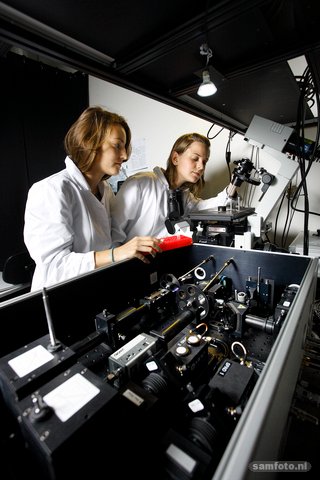One of the many small labs in the Applied Physics building, you will find the unassuming lab of bio- nanoscience where students are using their interdisciplinary skills to assemble an elementary cell.
This lab focuses on a single question: “What are the minimal requirements for a cell to survive and to live autonomously?” Researchers begin with the bottom-up process of taking a lipid vesicle and adding the building blocks of life. The hope is that they will improve the understanding of what the first cell looked like.
The lab isn’t only interested in cell evolution. One researcher, Alicia Soler Cantón says, “It is also good for our own personal evolution. There is an atmosphere of open-mindedness with students coming from Iran, Canada, France, Vietnam, the Netherlands and I am from Spain.” Soler Cantón initially came to do a short-stay-internship during her master’s degree but will continue on to pursue a PhD on a research project focused on targeted drug delivery.
The lab is also home to former National Dutch youth chess champion, PhD student Pauline van Nies. She credits her previous experience competing in chess for her ability to apply analytical thinking and to anticipate what comes next in her project. Van Nies says her lab is unique because of its interdisciplinary makeup. “Projects overlap and we are working together to achieve a bigger goal as a team,” explains van Nies. Her project is implementing DNA replication inside minimal gene expression system.
One of the lab’s end goals is to develop targeted drug delivery by using the synthetic minimal cells. Soler Cantón and van Nies reveal that the lab has very lofty goals. “The project is so big and has so many facets that it will take tens of years to complete,” Van Nies admits.



Comments are closed.